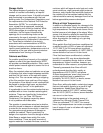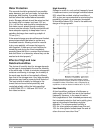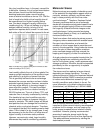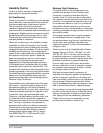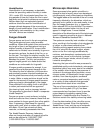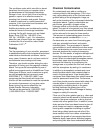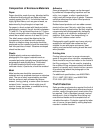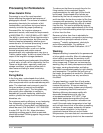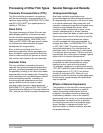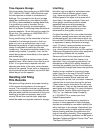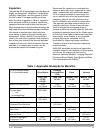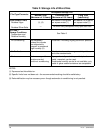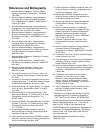
12 D-31 June 2002
Squeegees
It is important to use an adequate squeegee
where the film leaves the water wash and enters
the drying section. Otherwise, residual water
droplets will dry and form visible surface defects
and, in some cases, cause physical sticking of the
film laps. In wound-up rolls, these spots may
provide places where microscopic blemishes can
form. Inspect squeegees regularly (particularly
blade and roller types) to make sure that they do
not cause film scratches.
Drying
Drying should be uniform. The drying air should
be filtered so that airborne particles of dirt or
potentially harmful chemical dusts, often present
in processing laboratories, will not become
imbedded in the emulsion while it is tacky.
In machine processing, the recommendations of
both the equipment and film manufacturer for
operating conditions and processing chemicals
should be followed.
In other modes of processing, the following factors
are involved.
Washing Aids
Using a washing aid, such as Kodak Hypo
Clearing Agent (CAT No. 146-4254—5 gal.) or
Kodak Microfilm Clearing Bath and Replenisher,
greatly increases both the rate and thoroughness
of hypo removal during the washing step.
After fixing, the film is first rinsed to remove the
major portion of hypo; next, the film is treated in a
Kodak Microfilm Clearing Bath and Replenisher;
then it is given a final wash.
NOTE:The use of hypo eliminators, such as
Kodak Hypo Eliminator HE-1, is not
recommended for microfilm because
some hypo eliminators contain oxidizing
agents that can contribute to the
formation of emulsion blisters and
microscopic blemishes.
Residual Hypo Test
The accepted criterion for adequate washing is
the methylene blue method described in ANSI/
PIMA IT9.17-1998.
19
IT9.17-1998 also describes
the silver densitometric method, which has been
suggested by the Association for Information and
Image Management (AIIM) as a simpler and less
expensive alternative. If the silver densitometric
density difference is 0.02 or less, AIIM considers
that the methylene blue requirements for
extended-term storage record films have been
met. In both methods, a clear area of the film is
tested and residual hypo tests may be run up to
two weeks after processing. A simpler, but less
sensitive, method is the use of the Kodak Hypo
Test Kit (CAT No. 196-5847). This test gives an
indication of residual hypo, but it should not be
used as a measurement for meeting the
requirements of the ANSI specification.
NOTE:For satisfactory residual hypo levels in
films, both fixing and washing must be
acceptable—inadequacies in one cannot
be compensated by the other.
Residual Silver Compound Test
ANSI/PIMA IT 9.17-1998
19
and ISO 18917-1999
contain a test designed to indicate residual silver
salts in the film. Such salts are an important cause
of image layer degradation in aged-processed
photographic films.
Protective Coatings
It should be recognized that while lacquers and
other coatings have advantages for working prints
receiving hard use, they are not within the scope
of the ANSI long-term storage specifications.



